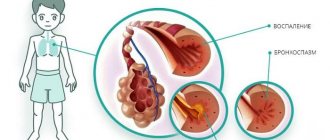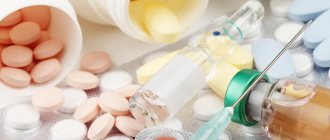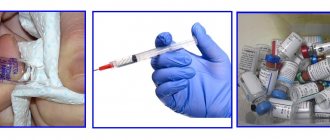Questions, answers, reviews on the drug Infezol 100
You can look at questions about the drug, as well as ask your question to a specialist, using a free consultation with a pharmacist or pharmacist.
The information provided is intended for medical and pharmaceutical professionals. The most accurate information about the drug is contained in the instructions supplied with the packaging by the manufacturer. No information posted on this or any other page of our website can serve as a substitute for personal contact with a specialist.
| * | Our site does not sell medicines and other goods; they must be purchased in pharmacies, in accordance with current laws. Data on prices and availability in pharmacies is updated twice a day. Current prices can always be seen in the section Searching and ordering medications in pharmacies. |
Pharmacological properties of the drug Infezol
Pharmacodynamics. Infezol is an infusion solution that contains amino acids and electrolytes, which are physiological substances or metabolic analogues. Amino acids are components necessary for the synthesis of proteins. Xylitol is a carrier of energy; during carbohydrate metabolism, it is broken down at the liver level, while its metabolites enter the processes of glycolysis and gluconeogenesis. Solutions containing amino acids are used for parenteral nutrition along with energy carriers, electrolytes and fluid to maintain or improve the body's condition or minimize weight loss. In pathological conditions, in the absence of exogenous administration of amino acids, a typical pronounced change in the set of amino acids in the blood plasma develops, both in the absolute concentration of individual amino acids and in their percentage in the blood plasma. 1 liter of Infezol 100 solution contains amino acids - 100 g, total nitrogen - 15.6 g, pH value 5.9–6.3; osmolarity - 1030–1260 mOsm/l. The total energy value of the drug Infezol 40 - 1551 kJ/l, the drug Infezol 100 - 1700 kJ/l. Pharmacokinetics. Amino acids are completely used for protein synthesis. Excess amino acids do not accumulate, unlike fatty acids and glucose. Only a small part (5%) of them is displayed unchanged. The breakdown of amino acids occurs through deamination of the α-amino group, which is metabolized to urea and excreted in the urine. The remaining carbon skeleton enters the citric acid cycle, where it is converted to acetyl-CoA, pyruvate, or an intermediate.
special instructions
During the period of use of Infezol 40, it is necessary to regularly monitor renal and hepatic laboratory parameters, serum levels of electrolytes, glucose, total protein, water balance and acid-base composition. Use the drug with caution in patients with increased serum osmolarity.
In patients with heart failure pathology, caution should be exercised when administering large doses of the solution. Metabisulfite, which is part of the drug, very rarely, including in patients with bronchial asthma, can cause hypersensitivity reactions, accompanied by acute attacks of asthma, vomiting, intermittent breathing, diarrhea, impaired consciousness, and shock. The course of these reactions is individual, but in some cases it can pose a threat to the patient’s life.
The reaction products of the interaction of sodium metabisulfite with tryptophan can affect the increase in the activity of liver enzymes and the concentration of bilirubin.
The contents of the bottle must be used immediately after opening.
The use of Infezol 40 does not affect the patient’s ability to drive vehicles and machinery.
Contraindications to the use of the drug Infezol
Absolute contraindications : unstable blood circulation with a threat to life (shock); insufficient supply of cells with oxygen (tissue hypoxia). Relative contraindications : disorders of amino acid metabolism, overhydration, hyperkalemia, hyponatremia, heart failure, severe liver or kidney failure (in the absence of sufficient diuresis), disorders of amino acid metabolism, traumatic brain injury, overhydration, methanol intoxication, hypersensitivity to sodium disulfide, acidosis . Due to insufficient experience, the use of Infezol 100 for the treatment of children under 2 years of age is not recommended.
Release form and composition
Dosage form - solution for infusion: almost colorless or yellow-tinged transparent liquid, has a specific odor (100, 250 or 500 ml in transparent glass bottles, 10 bottles in a cardboard box).
Content of active components in 1000 ml of solution:
- Glycine – 7 g;
- L-glutamic acid – 5 g;
- L-arginine – 4.55 g;
- L-alanine – 4 g;
- L-phenylalanine – 3.15 g;
- L-leucine – 2.75 g;
- L-lysine hydrochloride – 2.5 g, including L-lysine – 2 g;
- L-isoleucine – 2.1 g;
- L-aspartic acid – 2 g;
- L-valine – 2.25 g;
- L-methionine – 1.75 g;
- L-threonine – 1.6 g;
- L-histidine – 1.35 g;
- L-tryptophan – 0.5 g;
- Xylitol – 50 g;
- Sodium acetate trihydrate – 3.4 g, including sodium acetate – 2.05 g;
- Potassium chloride – 1.86 g;
- Sodium hydroxide – 0.6 g;
- Magnesium chloride hexahydrate – 0.51 g, including magnesium chloride – 0.24 g.
Total nitrogen content – 6.3 g/l, amino acids – 40 g/l.
Theoretical osmolarity is 801.8 mOsmol/l, energy value of the solution is 1551 kJ/l.
Excipients: water for injection, sodium metabisulfite.
Indications for use of the drug Infezol
Parenteral nutrition for hypoproteinemia and fluid loss of various origins (diseases of the digestive tract with impaired protein absorption, intestinal obstruction, burn disease, intoxication, etc.), inability to receive oral nutrition (after surgery on the esophagus, stomach, etc.), if necessary, improve metabolic and reparative processes in the postoperative period. Replenishment or elimination of protein deficiency arising from increased need or costs and when protein metabolism is disrupted during digestion, absorption and excretion.
Use of the drug Infezol
Used intravenously. Dosage depends on the clinical condition of the patient and his need for amino acids, electrolytes and fluids, body weight and the degree of catabolism. In case of predominance of catabolism, it is recommended to use the upper range of the given dosage. The infusion should be started slowly and the infusion rate should be increased to the required value over the course of 1 hour. Infezol 40. Adults: IV drip at the rate of 0.6–1 g of amino acids (up to 25 ml solution/kg body weight per day), in catabolic conditions - 1.3–2 g (up to 50 ml solution /kg body weight per day). Children aged 2–18 years: 1.0–2.0 g of amino acids (up to 50 ml solution/kg body weight per day). Maximum infusion rate: 2.5 ml/kg body weight per hour equals approximately - 0.1 g amino acids/kg body weight per hour; 0.125 g xylitol/kg body weight per hour; 0.8 drops/kg body weight per minute. 175 ml/70 kg body weight per hour equals - 7 g amino acids/70 kg body weight per hour; 8.75 g xylitol/70 kg body weight per hour; 60 drops/70 kg body weight per minute. If the body's need for fluid and calories is greater, the calculated amount of Infezol 40 can be supplemented by simultaneous or alternate administration of solutions of electrolytes, glucose, etc. If partial oral nutrition is possible, the amount of Infezol 40 is reduced in accordance with the amount of fluid and calories administered orally. The drug is used until the patient is completely transferred to enteral or oral nutrition. Infezol 100. Adults: daily dose: 10–20 ml/kg body weight, which is 1–2 g amino acids/kg body weight (70–140 g amino acids or 700–1400 ml for a body weight of 70 kg). Maximum daily dose: 20 ml/kg body weight, which is 2 g amino acids/kg body weight (140 g amino acids or 1400 ml for a body weight of 70 kg). Maximum infusion rate: 1 ml/kg body weight per hour, which equals 0.1 g amino acids/kg body weight per hour (7 g amino acids or 70 ml for a body weight of 70 kg). When using the specified maximum dosage, it is not allowed to exceed such permissible limits as a daily dose of 2 g/kg body weight and an infusion rate of 0.1 g/kg body weight per hour for amino acids. During parenteral nutrition in adults, the total amount of fluid administered should not exceed 40 ml/kg body weight per day. Children: the data given is an approximate average value and should be determined individually according to the age, stage of development of the child and disease. Children aged 2–5 years: daily dose is 15 ml/kg body weight (1.5 g amino acids/kg body weight). Children aged 5–14 years: daily dose is 10 ml/kg body weight (1 g amino acids/kg body weight). Maximum infusion rate: 1 ml/kg body weight per hour (0.1 g amino acids/kg body weight per hour). Infezol 100 is administered intravenously. At a low rate of administration, the components of the drug are utilized better than with rapid administration. Duration of use - until complete transition to enteral or oral nutrition.
Side effects of the drug Infezol
In isolated cases - nausea, vomiting, chills, phlebitis (especially with rapid administration); Too rapid administration of the drug can lead to the development of hyperkalemia and hyperammonemia. Due to the content of sodium disulfite in the drug, in isolated cases (especially in patients with asthma), hyperergic reactions, vomiting, diarrhea, dyspnea, asthma attacks, impaired consciousness, and shock are possible. In addition, the products of interaction of sodium disulfite with another component of the drug - tryptophan - can increase the content of bilirubin and the activity of liver enzymes in the blood plasma.
Infezol 40
Active substance:
Aminoacids for parenteral nutrition, Other medicines [Multimineral])
Pharmgroup:
Proteins and amino acids in combinations
Analogs for the active substance:Aminoplasmal E Aminoplasmal E10 Aminoplasmal E15 Aminoplasmal E5 Aminosol-Neo E Aminosteril KE Infezol 100 | Application area:Nutritional dystrophy Nutritional-infectious dystrophy Protein deficiency Protein-calorie deficiency Protein-energy malnutrition Protein fasting Restoring the concentration of chlorine ions Feeding premature babies Severe protein deficiency Nursing premature newborns Hypotrophy Hypotrophy in children Hypochloremia Protein deficiency Dystrophy Newborn dystrophy Supplemental parenteral nutrition Additional source of amino acids Additional source of essential amino acids Tube or oral nutrition Tube feeding Tube enteral nutrition Altered protein metabolism Protein anabolism disorder Protein metabolism disorder Protein metabolism disorders Amino acid deficiency Protein deficiency Deficiency of essential amino acids Protein malnutrition Malnutrition during periods of intense growth Poor nutrition Unbalanced diet Low protein diet Normalization of amino acid balance disorders Period of intense growth A period of intense growth and development Oral nutrition |






